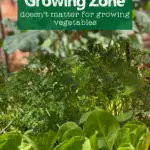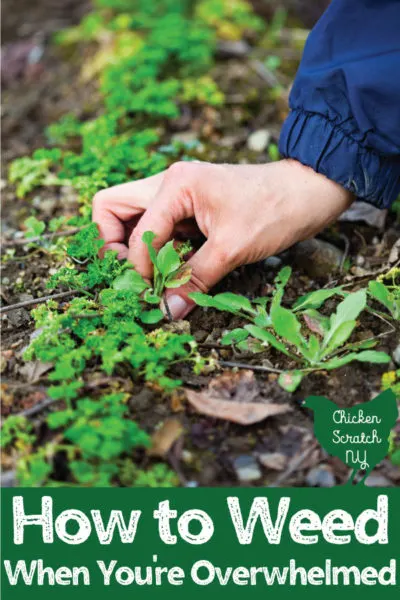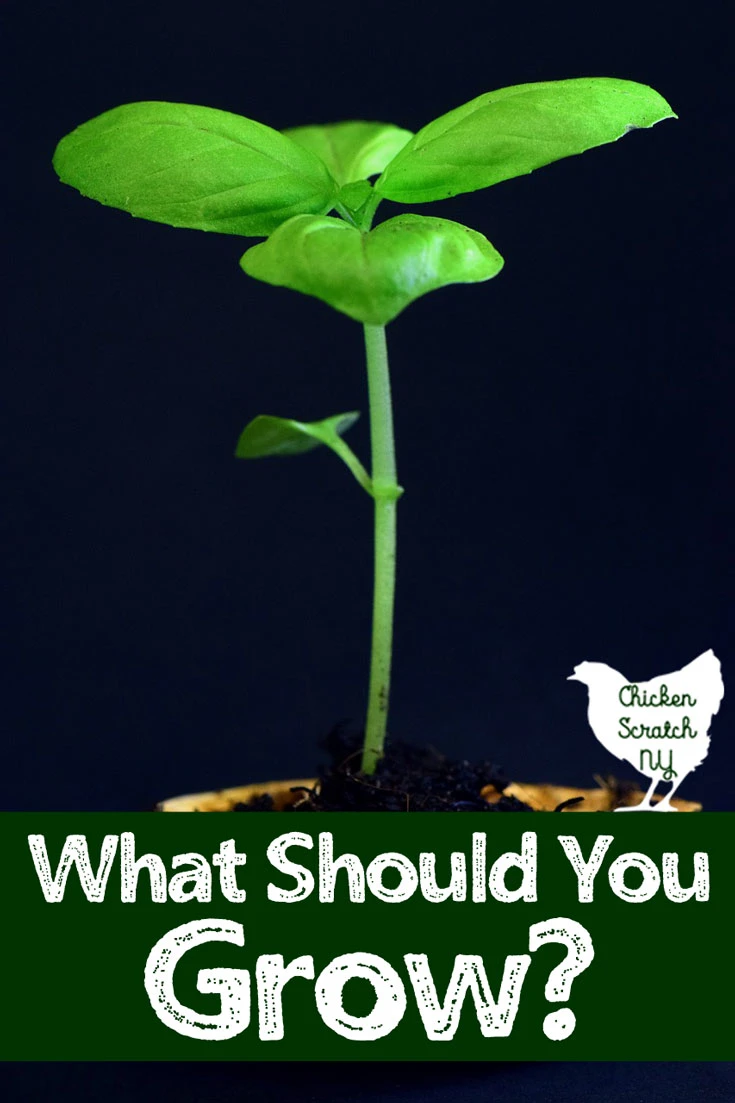Planting zone is an important tool when planning for perennial plants, like flowers, fruit trees and ornamental bushes. But it’s pretty useless in the vegetable garden, instead you should be focused on your last frost date and the length of your growing season.
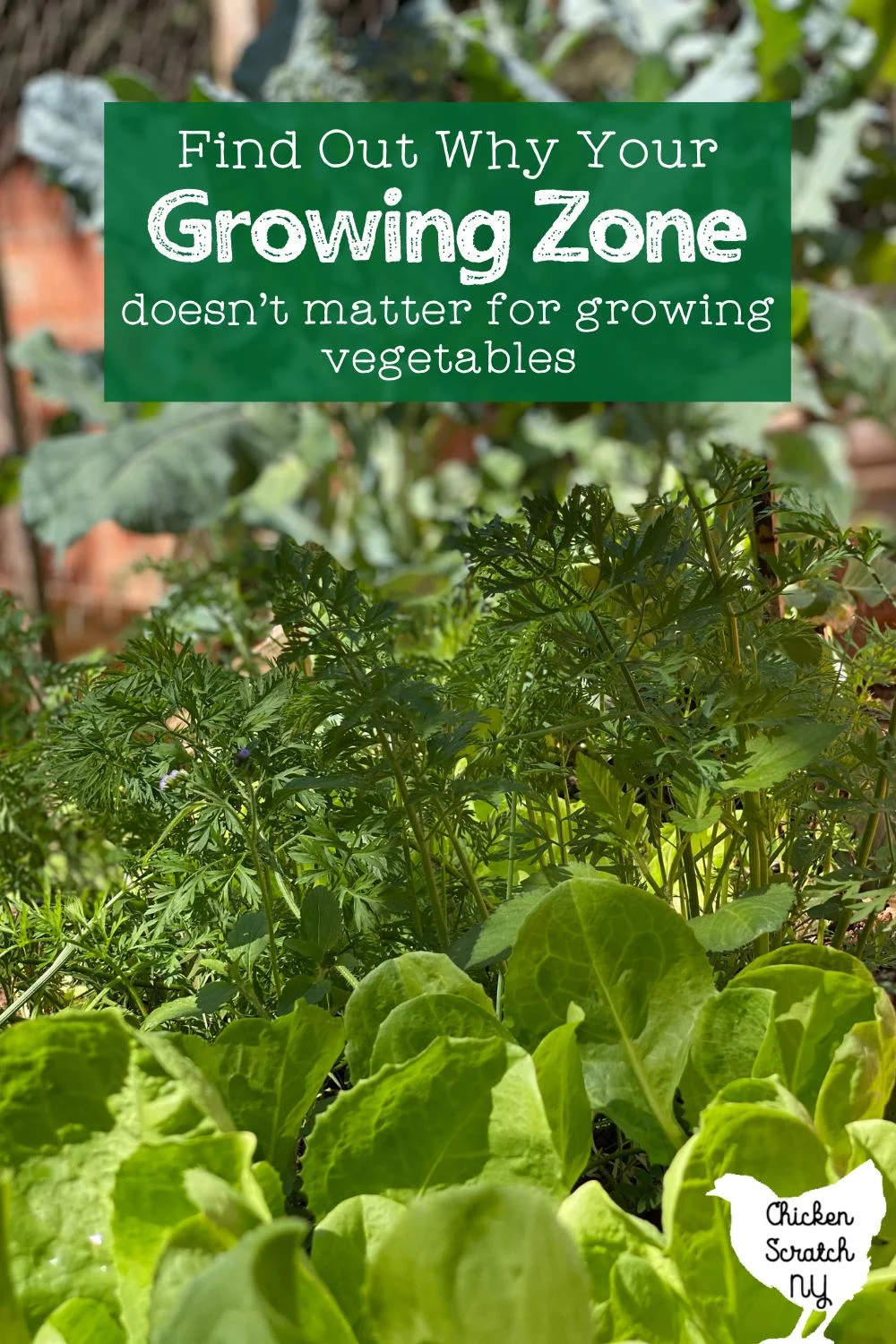
When it comes to planting a vegetable garden your zone doesn’t matter at all. The majority of vegetable crops (asparagus & artichokes are exceptions) are grown as annuals. They go from seed to harvest in one season.
What does Gardening Zone Mean?
Plant hardiness zones, gardening zones, or growing zones are all the same thing. All they tell you is how cold your area gets in the winter. When most of us are sitting inside with seed catalogs and not actually growing anything
The US is divided into 11 hardiness zones based on the average lowest winter temperature. These zones are huge and they spread across the United States in bands.
Since there are only 11 zones they cover quite a bit of real estate and there are huge differences in growing seasons in one zone.
Don’t get me wrong! Your gardening zone is very important if you’re planting perennial vegetables like asparagus or fruit bushes or trees. Anything that needs to survive the winter.
I see it every year in Facebook gardening groups “I’m in zone #, when do I start my seeds?” then inevitably there are 25 conflicting responses. And chances are they’re all right.
Read more about Ordering Seeds
Let’s look at Zone 5 where I live, all of these places share my zone. While we all have cold winters we have very differernt growing seasons.
- Cheyenne, WY May 18 – Sep 24 (128 days)
- Dodge, WI May 12 – Sep 25 (135 days)
- Utica, NY May 11 – Oct 2 (143 days)
- Augusta, ME May 1 – Oct 9 (160 days)
- Lincoln, NE Apr 27 – Oct 6 (161 days)
The number in parenthesis is the length of the growing season, or number of days you would have in a standard growing season (because ‘standard’ used to be a thing) between frosts.
There is a difference of 33 days between Cheyenne & Lincoln. A whole month can make a big difference when deciding what time of winter squash or melons you can grow.
Confusing side note: Last Frost Date is in the spring, First Frost Date is in the fall. It makes total sense but my brain confuses them every time.
There’s also a 2-week difference between the last frost date in Lincoln and the Utica & Dodge. Two weeks might not seem like a big deal until you’re drowning in leggy tomato seedlings.
A funny thing about plants is they tend to grow really slowly at first. They’re putting a lot of effort into growing roots and then, they hit a growth spurt.
Starting seeds indoors is a balancing act between starting too early and stunting the growth or starting too late and not having enough time to mature before the frost.
Important Dates for Gardeners
Instead worrying about your zone you need to figure out your last and first frost dates. The best way to do that is by using a site that aggregates temperature data from previous years to find an average.
The easiest way is to go to The Old Farmer’s Almanac and type in your zip code.
It will give you your last spring frost date and your first fall frost date. If you do a little math you can find out how long your growing season is.
Last Frost Date & First Frost Date
These dates define your growing season. Obviously, every year is a little different and gardening is a gamble anyway but it’s better than nothing!
The last frost date is important for more than just telling you when you’re safe to tuck your tomato plants into garden beds.
That magical date is what you base all of your seed starting and direct seeding information on. If you look on the back of any seed packet it will say either start indoors X weeks before last frost or start outside X weeks before/after last frost date.
One of my favorite free gardening tools is this Online Seed-Starting Date Calculator from Johhny’s Seeds. All you need is the date of your last frost and it will tell you when to start your seeds and when it’s safe to set out the plants.
Growing Season
The period of time between your last and first frost dates is considered your growing season. This is the time you can count on being able to grow frost-sensitive plants.
This information is really helpful when deciding what you can grow in your garden. I would love to grow giant watermelon in my garden but we just don’t have the heat for long enough, instead I’m stuck trying my best to get my small melons to ripen before the frost sets in.
Growing food isn’t actually limited to this time period, there are plenty of cool hardy vegetable crops that will keep going after frost has killed off all the basil, pepper and tomatoes.
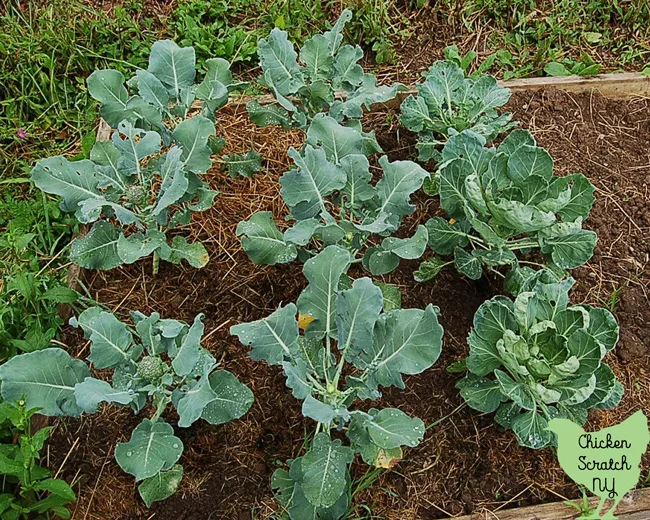
Fall planted peas, brassicas and many types of green will keep on going into the fall months. Will some preparation you can even grow food all year round, if that sounds like something you’d like to try check out The Winter Harvest Handbook by Elliot Coleman.
He is an amazing gardener in Maine where he grows food all through the bitterly cold months.
Read more about my Favorite Gardening Books
You can also grow food indoors, either with a kit (mushroom kits are fun to grow even if you don’t like to eat them), under grow lights (try pea shoots!), or on a windowsill if you’re home is a little warmer than mine.
Check out my Vegetable Garden page for more ideas or start here:

